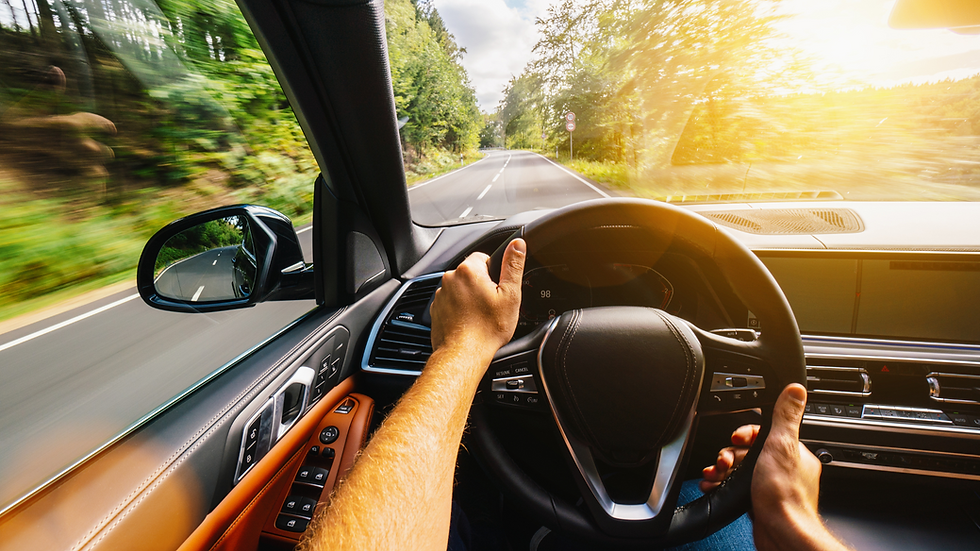How To Become A Pilot Car Driver For Oversized Vehicles
- David Campbell

- Jun 17, 2023
- 4 min read
Updated: Jun 2, 2024
Drive with a Purpose: How to Become a Pilot Car Driver for Oversized Vehicles
Do you love being on the road, but are you looking for a new career path? Have you ever seen oversized vehicles and wondered how they get from place to place with ease? Enter the role of a pilot car driver! As the name suggests, pilot car drivers lead the way for oversized vehicles and ensure that they get to their destination safely. In this blog, we’ll guide you through the steps to become a pilot car driver and embark on a journey that will allow you to see the world from a different perspective.
How to Become a Pilot Car Driver for Oversized Vehicles
Is driving your passion? Do you want to become a pilot car driver for oversized vehicles? If the answer is yes, then you have come to the right place. It is not a very tough task if you know the steps well. But what are the correct steps? From my years of experience, I have gather the most important steps that you need to follow to become a pilot car driver for oversized vehicles. Follow the steps and you are good to go to achieve your dreams.
Education and Training
The first step in becoming a pilot car driver is to obtain proper education and training. While there are no specific degree requirements, you should at least obtain a high school diploma or GED equivalent. Additionally, it is recommended that you complete a driver training program. Such programs typically include classes on regulations, escort procedures, navigation, and safety rules. Some states may require you to obtain a certification before you can operate as a pilot car driver.

Obtain a License
In addition to education and training, you must also have a valid driver’s license. Depending on your state, you may need to obtain a commercial driver’s license (CDL) with certain endorsements. You should also ensure that you have a clean driving record, which means no serious traffic violations or accidents.
Get Insured
Once you have your license, the next step is to get insurance. As a pilot car driver, you are responsible for the safety of the oversized vehicle you are escorting. Therefore, you should have liability and cargo insurance. Liability insurance protects you from liabilities if you cause an accident or damage someone's property while escorting the vehicle. Cargo insurance covers the value of the oversized load you are escorting.
Purchase Necessary Equipment
Your next step is to purchase necessary equipment required for the job. Such equipment includes flags, cones, emergency flares, radio communication, and a GPS device. The flags, cones, and flares are used to guide the oversized vehicle through unfamiliar territory in a safe and efficient manner. Radio communication and a GPS device ensure that you are always in contact with the driver in the oversized vehicle and you can easily navigate through new routes.
Find Work
The final step is to find work. Pilot car driving jobs can be found through online job search engines, truck driving companies, and sometimes directly through oversized load companies. Building relationships with other pilot car drivers, truck drivers, and shippers can also help you find work. Networking can lead to referrals and job offers down the road.
Is It Profitable to Become a Pilot Car Driver for Oversized Vehicles?
Becoming a pilot car driver for oversized vehicles is an important job that requires skill and attention to detail. The responsibilities of a pilot car driver include providing assistance with navigation, hazard warning signs, and other services to ensure the safe transport of oversized vehicles.
Since pilots are responsible for the safety of these kinds of transports, they must possess the knowledge and experience needed to safely navigate oversized vehicles on highways, bridges, and other roads. Additionally, pilots need to be familiar with laws and regulations pertaining to oversize loads in order to ensure that they are not breaking any rules or endangering other drivers on the road.
If you think that this kind of job is something that you would like to do, it is important to consider the pros and cons of becoming a pilot car driver. On the one hand, pilots have an opportunity to make a good living as their services are usually in high demand. Additionally, they can travel extensively around the country while on the job which may be appealing for those looking for more adventure.
On the other hand, being a pilot car driver can have its downsides. Since pilots are responsible for the safe transport of oversized vehicles, they often work long hours in order to get the job done and may also be exposed to inclement weather conditions at times. Additionally, since pilot cars are usually in high demand, drivers may find themselves working on holidays or weekends when other drivers may not be available.
Overall, becoming a pilot car driver for oversized vehicles can be an exciting and rewarding career choice for those who are up to the task. It is important to carefully consider all of the responsibilities and potential risks associated with this kind of job before making your decision. With proper preparation and dedication, however, it can be a great way to make a living while seeing the country. Good luck!
Final Thought
Becoming a pilot car driver might seem like a daunting task, but with the right preparation, it can be an exciting and rewarding career. Education and training, obtaining a license, getting insured, buying equipment, and finding work are the essential steps in becoming a pilot car driver. Once you have the necessary skills and equipment, you will embark on a career that allows you to travel across the country while ensuring that oversized loads are safe on the road.



Comments